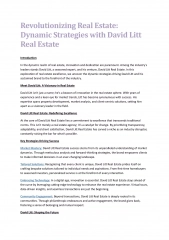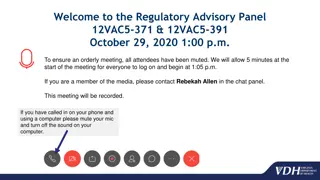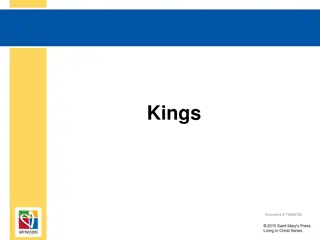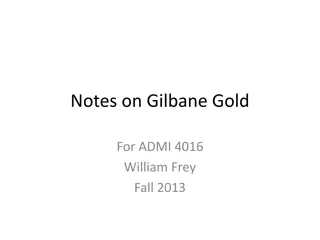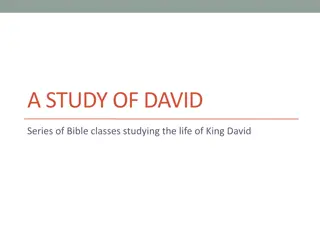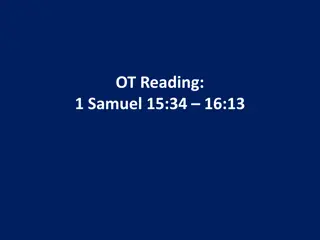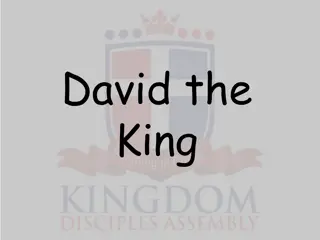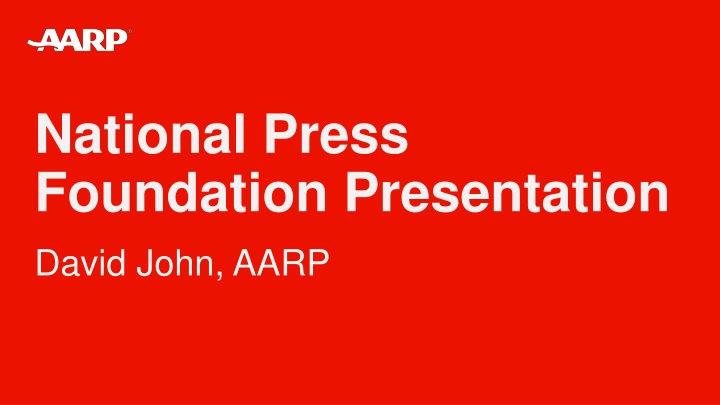
Improving U.S. Retirement System: Essential Reform Insights
This presentation by David John from AARP focuses on key reforms needed to enhance the U.S. retirement system. It addresses challenges such as limited access to workplace retirement savings programs, the importance of automatic features in boosting participation and savings, portability of savings between employers, decision-making on retirement savings utilization, and the necessity of emergency savings. The data highlights the significance of employer-offered retirement plans and the willingness of individuals to participate if such plans were available. Additionally, it emphasizes the potential benefits of state-facilitated retirement savings options.
Download Presentation

Please find below an Image/Link to download the presentation.
The content on the website is provided AS IS for your information and personal use only. It may not be sold, licensed, or shared on other websites without obtaining consent from the author. If you encounter any issues during the download, it is possible that the publisher has removed the file from their server.
You are allowed to download the files provided on this website for personal or commercial use, subject to the condition that they are used lawfully. All files are the property of their respective owners.
The content on the website is provided AS IS for your information and personal use only. It may not be sold, licensed, or shared on other websites without obtaining consent from the author.
E N D
Presentation Transcript
National Press Foundation Presentation David John, AARP
Improving the U.S. Retirement System Essential reforms: Creating Retirement Savings Coverage: Who does not have access to a workplace retirement savings program Payroll deduction & auto features build participation & savings Preserving Retirement Savings Portability: Moving savings from one employer to another Moving and/or finding past accounts is unnecessarily hard Using Retirement Savings Deciding how to use savings is a universal problem Some form of automatic option is needed Emergency Savings are also needed 2
Building Retirement Savings 3
U.S. Private Sector Employees Ages 18-65 With No Plan
Those participating in a workplace retirement savings plan say it s important in helping them to save for retirement. Importance of your workplace retirement savings plan in helping you save for retirement Base: Employed and contribute to a workplace retirement savings plan (excludes self-employed), n=323 82% 96% Important QB4. Thinking about the workplace retirement savings plan to which you are making contributions, how important is this retirement savings plan in helping you save for retirement? Base: Employed and contributing to a workplace retirement savings plan (excludes self-employed) 14% 4% 0% Very important Somewhat important Not too important Not at all important 5
Those who are not offered a retirement savings plan say they would take advantage of an employer-facilitated plan.* Likelihood of taking advantage of way to save for retirement at work if employer offered* Base: Employed but employer doesn t offer a retirement plan (excludes self- employed), n=91 91% Likely 54% 37% QB2. If your employer offered a way to save for retirement at work, how likely would you be to take advantage of it? Base: Employed but employer doesn t offer a retirement plan (excludes self-employed) * Small base. Interpret results with caution due to small number of respondents for this question. 6% 3% Very likely Somewhat likely Not very likely Not at all likely 6
The Automatic IRA A simple, low-cost way to provide retirement benefits to small businesses. It s just another payroll deduction. Allows employees to save their own money. No employer match allowed. Employers pay no fees to use the program. 8
The Automatic IRA Simple & easy to understand for employees. Employees like automatic enrollment and are grateful for the guidance. Appears to spur growth of other plans also. 9
Small Business Experience with OregonSaves Source: Pew Retirement Savings Project 73% had a positive or neutral experience with both the registration and ongoing facilitation of the program. 76% said they were satisfied or felt neutral about with the amount of time it took to register their business with the program. 82% were satisfied or felt neutral about the help they received from OregonSaves representatives. 79% did not experience any related out-of-pocket costs. Those that did said office supplies and payroll processing time were the most common. 80% said that they are hearing only a little or no questions at all from their employees about OregonSaves. (Assistance is available directly from the program s client service team.) 10
Preserving Retirement Savings 11
Job Change Cash Outs are a Major Problem At least 33% and as many as 47% of plan participants withdraw part or all of their retirement plan assets following a job change. The lost savings due to cash-outs amounts to between $60 billion and $105 billion annually. Approximately 4.5 to 6.4 million participants cash-out annually, which is approximately 6.5% to 9.5% of 401(k) plan participants. 12
Job Change Cash Outs are a Major Problem Leakage reduces retirement balances at age 60 by 31% according to Treasury & Joint Tax. Small accounts involuntarily rolled into an IRA are about 10 times more likely to be abandoned than small accounts that are not involuntarily transferred. 13
Regulatory & Business Practices Can Help Require qualified DC plans to accept rollovers with appropriate protections. Permit Roth IRAs to be rolled over to qualified plans. Prevent shrinkage & promote growth of small auto-rollover IRA balances by allowing them to be invested in QDIAs. 14
Regulatory & Business Practices Can Help Use the entire account balance in determining the $5,000 limit on auto rollovers to IRAs. Support automatic portability rollovers between employer plans when employees change jobs. 15
Establish a Pensions Dashboard A dashboard would include an online registry allowing each worker to track their retirement accounts and benefits. It could also offer services such as recovering and consolidating lost accounts, projecting future income, or even providing or referring unbiased financial advice to users. In order to find and consolidate accounts, the saver must proactively go to the dashboard and then act. 16
Automatic Rollover or One Lifetime Account Default consolidation of all or many of a saver s accounts, including small or inactive ones, can simplify the task of managing accounts, reduce costs, and discourage leakage. Savers do not need to take action to benefit. Australia and New Zealand have accounts that move with the saver from job to job. State Auto IRAs are receiving deposits from more than one employer. 17
Using Retirement Savings 18
From Saving to Spending 73% of Americans say they do not have the financial skills to manage their money in retirement. (Oakley and Kenneally (2019) 79% say that retirees don t have the investment skills to ensure their retirement savings last throughout retirement. Inflation makes that process harder. Annuities can be expensive and are unpopular. An automatic, flexible solution is needed to help people supplement their Social Security benefits. 19
Building Emergency Savings 20
Emergency Savings Build Resilience Having and using emergency savings strengthens household finances for several years after the emergency. (Sabat & Gallagher) A 2018 AARP poll found that about 7 of 10 people would join a payroll deduction emergency savings program. But enrollment difficulties reduce participation. A new NEST study in the UK showed that auto enrollment increased participation by 50 percentage points & savings by 300%. 21
Questions? 22


